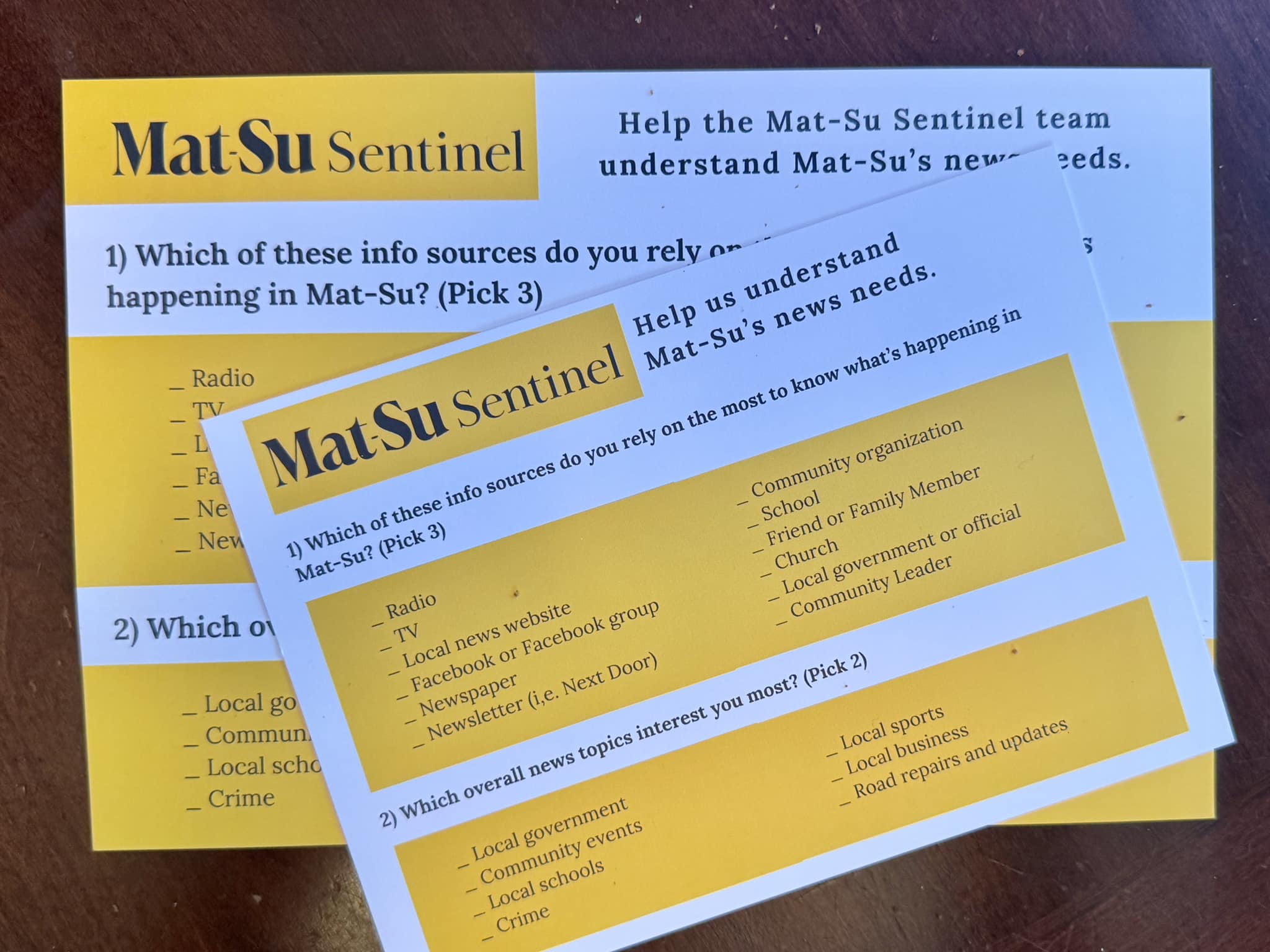
By Jesse Hardman and Amy L. Kovac-Ashley
It’s really hard to escape the word “scale” in today’s journalism space, which can cover everything from franchising a news idea to audience numbers. Since we can’t escape the question of scale, we’re going to define it for our own purposes. Listening to communities + peer collaborations = scale. That’s the equation at the heart of a new collaboration between the Listening Post Collective and Tiny News Collective.
We are formally leveraging our unique work in the civic media space, thanks in no small part to funding from the John D. and Catherine T. MacArthur Foundation that we both received. It was only a matter of time before we found each other. We both have Collective in our name, of course. And it’s been inspiring to get a chance to meet and brainstorm regularly about how to make communities civically stronger and more informed. We share a responsive approach that focuses on strategies based on listening and providing pathways that are not prescriptive from the get-go.
We want to tell you more about why we’re embarking on this journey together, how we’re conceiving this collaboration and some examples of how community-rooted news and information providers can benefit from us working together.
To do that, we’ll hand the mic back and forth between Jesse Hardman, Listening Post Collective’s founder, and Amy Kovac-Ashley, Tiny News Collective’s executive director.
Jesse: Someone recently said to me, “It’s about asking the question, what does the world need from us? Not what do we need from the world?” He was referring to this unsettling time, and the role of civic organizations in it. But I think it’s also the right question when things don’t feel so unsettling. At the end of the day, do you need to convince a community that your awesome idea is what’s missing from their lives? Do you only appear when there’s an emergency? Or, are you around when things aren’t on fire? Did the community share an idea to partner on, and tell you what they need to build it?

We recently hit 700 signups in our Civic Media Playbook. Most of that traffic is organic, which we know because in our sign-up page we ask, "How did you hear about the Playbook?” One of the more common refrains is “word of mouth.” They are coming to us, and throughout the process of using our Playbook — often to map their community information needs — they are letting us know what kinds of specific guidance they need. But it’s all driven by them. That matters because ultimately building more resilient local information ecosystems has got to come from community members themselves. Otherwise, it won’t stick.
Amy: We wholeheartedly agree, Jesse. For too long, journalism has provided solutions to problems that don’t resonate with the challenges that communities face. So instead, we want to turn that on its head. The products, outlets and connections that we build need to come from the ground up, based on the needs and desires of living, breathing people. That is a particularly human-centered approach that shows up in all that we do at Tiny News Collective and that you all do at the Listening Post Collective.
Along those lines, I think our two organizations make sense together because of our close values alignment. We both focus on equipping people and serving people through both traditional and nontraditional approaches. Equity is at the heart of what we both do — in service of community.
We also both believe that it takes a lot of different people to find community solutions — and that those skills aren’t exclusive to traditionally trained journalists. For example, one of our members, Ethiopique, was founded by an entrepreneur with a background in social services, community development and business. Henok Mengistu, an Ethiopian immigrant himself, saw a need among the Amharic-speaking community in the Washington, D.C., area, for news, information and community connection. That’s why his outlet both provides stories on education and politics but also puts on community events to bring people together, such as Fishing with Ethiopique.
One thing that’s so important right now is to help people navigate the journalism support systems in place, as was highlighted in this report about the role of support organizations in journalism. Too often, people and organizations on the frontlines of journalism don’t know where to go for help, and the help that’s out there can be duplicative or opaque. With this partnership, we will lean on the best of what both of our organizations offer and help people find what they need to support their ideas, projects, products, outlets and communities.
We see multiple pathways from and to LPC and TNC. For example, people employing the Playbook might want to start their own independent publication and could come to us for support. TNC members exploring community engagement approaches might want to use the Playbook to go more deeply into one area or another. One of our members, Mat-Su Sentinel in Alaska, has already done that by using the Playbook to inform her community listening efforts.
Jesse: One of the key opportunities between our two organizations is helping create project continuity. A lot of nascent community information efforts need support, financial and otherwise, for a few years, not just as a start-up phase. Otherwise, they can get stuck in second gear and lose the community’s attention. You give grants, Amy, that range roughly from $250 to $25k, and ours are around $20k, to help spark important work. Some folks call those “microgrants,” but that’s subjective. It’s more about how that money is being used, and the support that we give alongside the money. We’ve seen partners turn $20k into much bigger grants a few years later, in no small part because they could show how well they know their local information landscape.
Amy: Mat-Su Sentinel’s founder, Amy Bushatz, received one of your grants to help put her community listening ideas into practice and has already had 250 people answer a survey about community needs. She said the engagement support from the Listening Post Collective dovetails with Tiny News Collective’s services and support for her to build up the Sentinel into sustainability.
We believe that small grants, spread out to people who don’t know just their cities and towns, but also their neighborhoods, their immigrant communities, their school districts, can have a huge impact. Having bigger sums of money to invest in local media, from our perspective, is an opportunity to spread the wealth and invest in more existing and emerging hyperlocal news and information ideas.
For example, I emailed this link to Jesse the other day about a DIY news anchor in Southern California who was formerly incarcerated because I knew he’d be as excited to reach out to him as I was. That’s our sweet spot: individuals who know and care about their communities and have ideas on how to reach them with important civic information better.
Jesse: And there are so many amazing, localized, individual efforts like Ahmed Bellozo’s in the Inland Empire, that merit support. That’s what’s so exciting about MacArthur’s local news “Big Bet” and Press Forward’s local chapters strategy. They are looking to spread out, identify and support as many of the unique community-led news ideas as they can.
At the end of the day, whether you're dealing with $20 million or $20,000 to invest in local media, the approach should be the same. Listening to communities + peer collaborations = scale.
High-five, Amy!
Amy: Right back at you, Jesse. We are so pleased to be in solidarity with you and can’t wait to see what we’ll be able to do together.
Jesse Hardman is the founder of the Listening Post Collective. Amy L. Kovac-Ashley is the executive director of the Tiny News Collective.
Sign up for our monthly newsletter for ongoing updates, announcements, and resources for newsroom entrepreneurs.